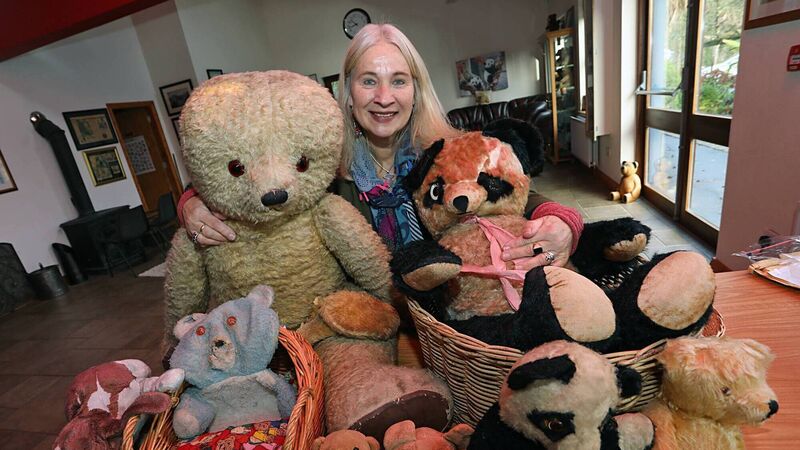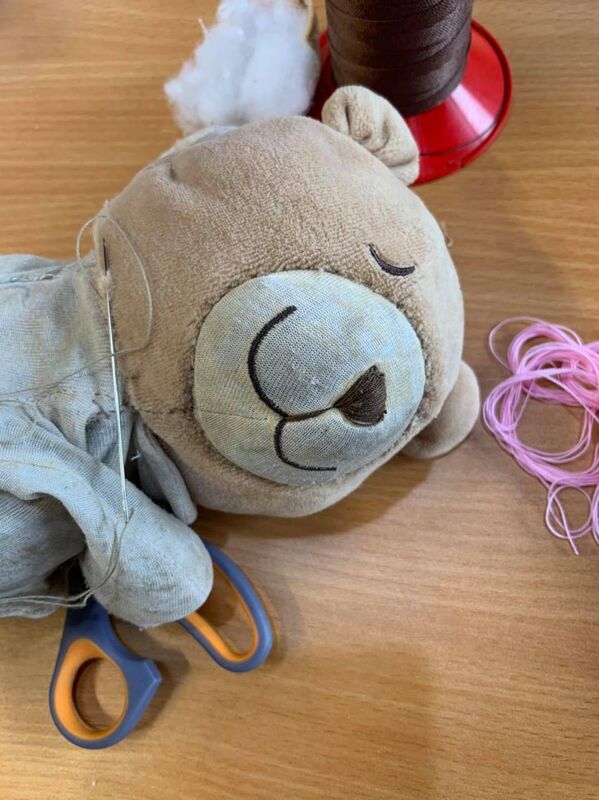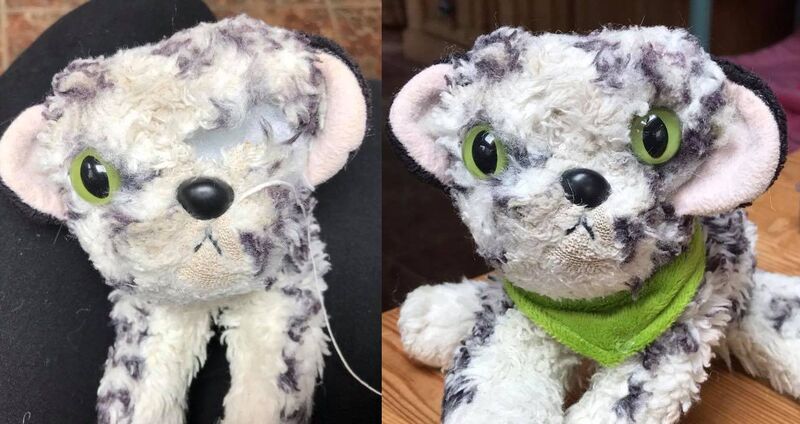Ireland's teddy bear hospital in search for new surgeons

Anke Morgenroth of Bear Essentials, Bawnboy, Co Cavan, with some of her customers. The hospital is now seeking intern bear surgeons as owner Ms Morgenroth nears retirement. Picture: Lorraine Teevan
Ireland’s teddy bear hospital treats bears aged from a few years old up to 103 but is now seeking intern bear surgeons as the owner nears retirement.
All loved bears are welcome, with an emergency service for bears who cannot be parted from their young owners even for one night.
New eyes or ears, replacement growlers to make that much-loved sound, and new safer stuffing are among the intricate operations hand-stitched at a rural setting in Bawnboy, Co Cavan.
Owner and chief bear surgeon Anke Morgenroth focuses on how much a bear is loved in deciding who to admit from their application lists. Sometimes though, there is almost too much love.
“With children, it’s not easy, because they usually don’t want to part with their bear,” she said.
“We have an emergency service for children who sleep with the bear as a comforter and don’t want to part with them. For those cases, we have a book-in service. People come from Dublin or from Cork or Wicklow, stay the day here and we repair the bear in the morning so they can take them back in the afternoon.”
She has run the hospital alongside her business designing mohair teddy bears for over 20 years and said there is no typical cost or time for the repairs. Some large bears need three to four days' work.

Her idea of what an “old bear” is might surprise people.
“People ring and say ‘I have a very old bear, he is almost 50’. So that’s not old for us,” she said. “An old bear is if he is 100 plus or 90 plus. Recently, we had a good few bears which are over 100 years old and that is really amazing.”
They take email applications, sent with photographs to help with estimating costs. Bears which cost very little when first bought have been successfully repaired, although she said this depends on the condition of the material.
“We have enquiries every single day. Some people send 10 pictures, and a video as well,” she said. “We can’t take every application. If we can’t do a good job, we’d rather not do the job at all.”
Recently, they received an increasing number of requests from family members looking to restore bears belonging to people who died during the pandemic. These may be as a memento rather than for children, she explained.
“I find the emails very personal, I love that part,” she said. “Quite often I would personally ring them as well to learn how important the bear is to them, and that they really understand what they are going to do.”
She also calls older people who have struggled with uploading photographs. “Definitely due to Covid, it happens more and more that people tell us quite long stories about who the bear belonged to, or what kind of journey the bear has taken,” she said.
She has a keen interest in the history of toy-making, and said it is exciting to sometimes get a close-up of how bears were made over a century ago. One bear she treated recently was so moth-eaten she was not sure at first if they could help.
A local family wanted to repair the bear for their brother, an adult living in London. “He was over 100 years old, he was very special,” she said. “I had the feeling no skills in the world could do anything for that bear, but we repaired him.”
The first step was wrapping the bear and placing it into a freezer for some days to kill any hungry moths inside. When the repair job was done, the man’s sister collected the bear to bring it to London.
“His sister said ‘he’s [the bear] quite big but I didn’t have to book a seat on the flight for him. I’ll have him on my knee in the flight to London,’” Ms Morgenroth said. “She actually took photographs during the whole journey of this bear going back to the brother in London.”
The hospital sits on the grounds of the Silver Bear Centre where Ms Morgenroth offers build-a-bear workshops for adults and children. On Thursdays, the workshop focuses on the sick bears, with children booking a place to watch the repairs or they can learn how to stitch their own damaged bears.

Now, however, she is starting to think about what will happen to the Teddy Bear Hospital when she retires. Her husband Nicolaus Bartsch helps out, as does a family friend Louise.
“We don’t know who will follow us if you don’t have somebody who is interested in this and maybe trained in it to take this up,” Ms Morgenroth said. “I can see us doing this for a few more years but eventually we have to retire.”
They are already so busy she said she could not keep up with the repairs without her husband. They have temporarily closed the repair list to ensure Christmas orders are met.
“I would be interested if somebody wants to work with us one day a week and be trained in this, and work with us in it,” she said.
“I would like this. People have to have at least a little bit of sewing skills, for restoration you need to know a good bit, especially handling old material. You need to know how the needle will react when you put it in fragile material.”
Last year, the Dolls Hospital & Teddy Bear Clinic in Dublin closed after more than 40 years. This followed the death of Christopher Nolan who worked with his wife Melissa on the repairs. She said at the time: “I have very mixed feelings about this decision as The Dolls Hospital has been a big part of my life.”
Some other options remain. In Cork, Pinocchio's Toys and Gifts shop treats teddy bears and dolls in their hospital, running for over 20 years. Owner Wyon Stansfeld says they admit patients of all ages and health. On their Facebook page, they share pictures of happy patients, including toys who were over-loved and in need of ‘skin grafts’.
Injured teddies can also be taken to annual pop-up Teddy Bear Hospitals run by medical students around the country including the University College Cork Medical Society. Ms Morgenroth remembers when she first opened the centre, there was less of a teddy bear culture in Ireland compared to her native Germany.
However, now she thinks people are more aware of the value of keeping toys. Her own handmade mohair bears have increased in popularity in Ireland and abroad.
“Ours are one-off editions, they come in different collections so the collection has a name like Little Rascals but they are all one-offs,” she said. “They’re the same design, made of different mohair and differently customised.”
These days, children and young adults who were given her bears as babies now come back to visit. “They bring the bears in to meet us, it’s so sweet. I find this very moving,” she said.
Vouchers for the build-a-bear workshops are available as gifts. Who knows perhaps someone might start learning how to stitch and one day end up as chief bear surgeon.
More information: bearessentials.ie and silverbearcentre.ie.










